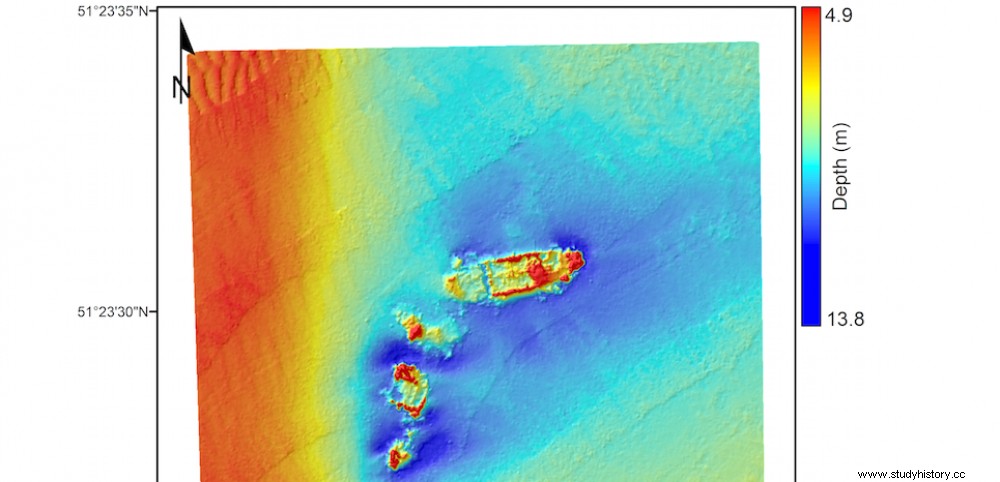 The wrecks would generate suspended particles that could be detected by Landsat-8 type satellites.
The wrecks would generate suspended particles that could be detected by Landsat-8 type satellites. WRECKS. Hundreds of thousands of shipwrecks litter the bottom of the seas. Their number is thus estimated at 9,000 in the west and south of England alone. How to spot them all? Is it even possible? For the first time, the use of high-resolution satellite imagery techniques would have made it possible to locate them at a depth of 15 meters. According to an article published in the journal Journal of Archaeological Science, it is by identifying the concentrations of suspended particles (suspended particular matter, SPM) generated by these wrecks that localization would be made possible. These particles, detected by the Landsat-8 satellite, are generated by erosion (scour) phenomena. Four ships were thus able to be circumscribed near the port of Zeebrugge, in the North Sea. "This technique should be applicable to wrecks located at greater depths" , said, confident, Matthias Baeye, of the Royal Institute of Natural Sciences of Belgium, co-signatory of the study.
Wrecks contain non-biodegradable toxic substances
The interest of this technology, in addition to helping to locate historic wrecks, mainly concerns dangerous wrecks, sources of serious pollution by the non-biodegradable toxic substances that constitute them or that they still contain. Thus, "more than 70% of the wrecks in European waters date from the First and Second World Wars. However, corrosion threatens to release their contents...", like the oil contained in their bunkers, explains Michel L’Hour, director of the Department of Underwater and Underwater Archaeological Research (DRASSM), in Marseille. A time bomb, marine corrosion devours metal at the rate of 0.01cm per year. "The problem has already started. Especially for buildings from the First World War, submerged for a century now!", continues the underwater archaeologist.
The North Atlantic thus contains 25% of the potentially most polluting wrecks in the world and the total volume of oil trapped in their holds is estimated at nearly 38%. "The most serious thing is above all the ammunition embarked by these ships torpedoed offshore after the war, and which contained chemicals" , continues the specialist. Tens of thousands of tonnes of ammunition have thus been voluntarily sent underground after the conflicts. In particular mustard gas, the terrible mustard gas. "While some chemicals dissolve in water, this gas does not." This would turn into a kind of yellow paste that the fish would feed on. "Ingestion of mustard alters the DNA and the damage will be irreversible in humans who will consume these fish" .
Risk of mercury pollution
There is also the question of mercury… like the famous case – still unresolved for Norwegian residents – of the German submarine U-864. Torpedoed in front of Bergen by the British in 1945, while leaving for Japan with the engines and plans of the Messerschmitt 262, the first jet plane, it also carried on board 67 tons of mercury packaged in 37kg steel cylinders. "In 2005, one of these bottles observed at a depth of 150m was found, open by corrosion. All the mercury had escaped" . In 2016, the ship was still not refloated…
These new detection methods could therefore allow better mapping and monitoring of wrecks and their evolution "because we are inexorably heading towards problem years" , concluded Michel L’Hour.
